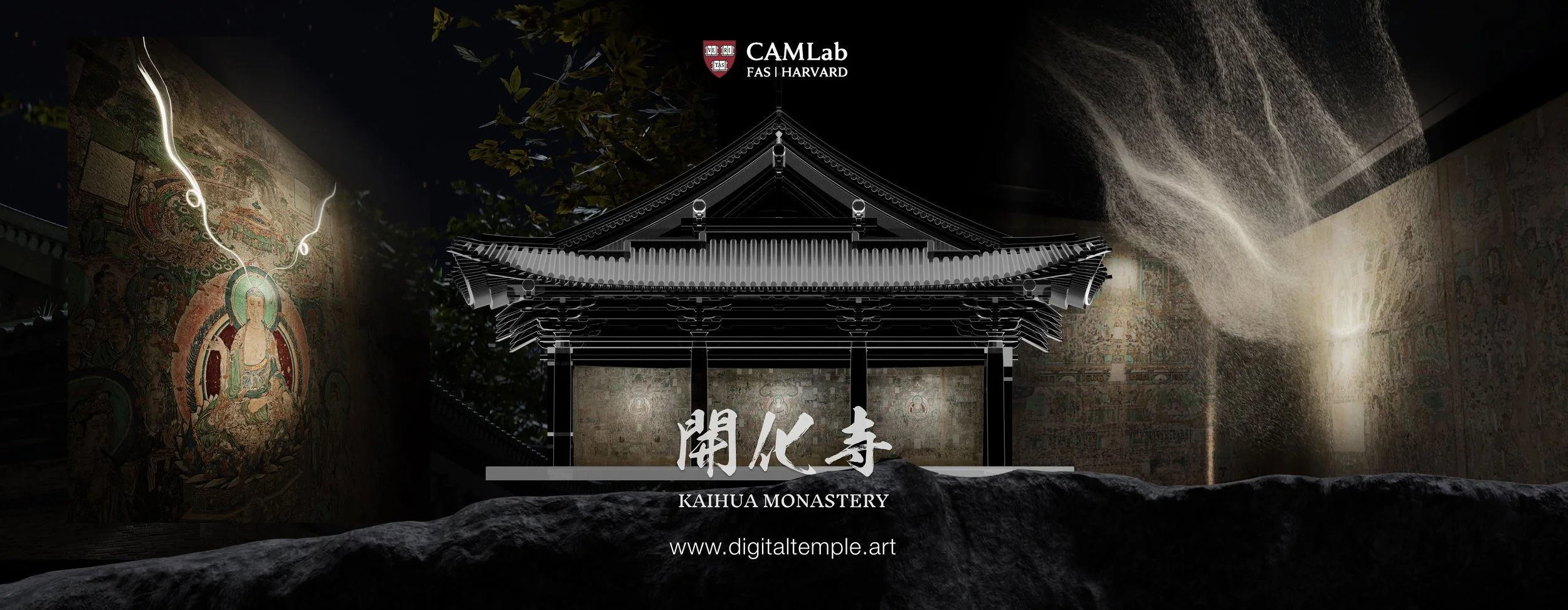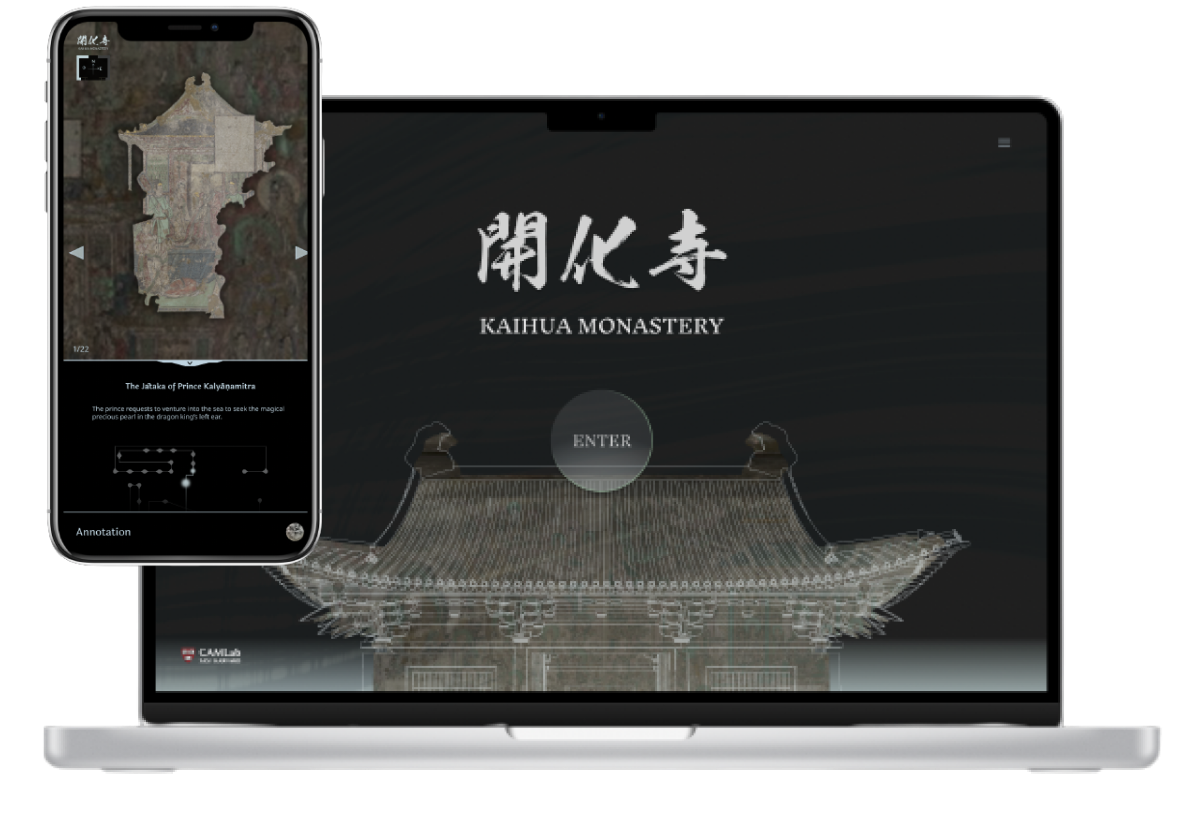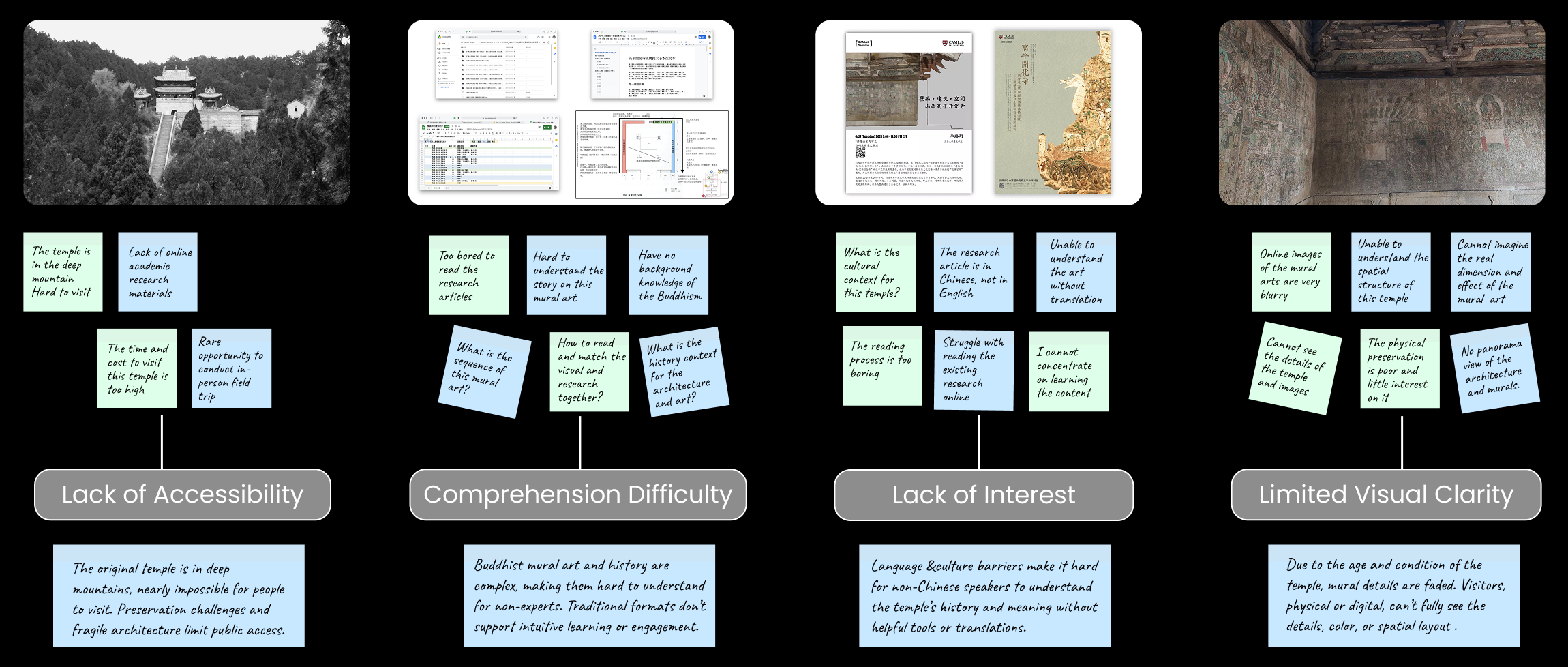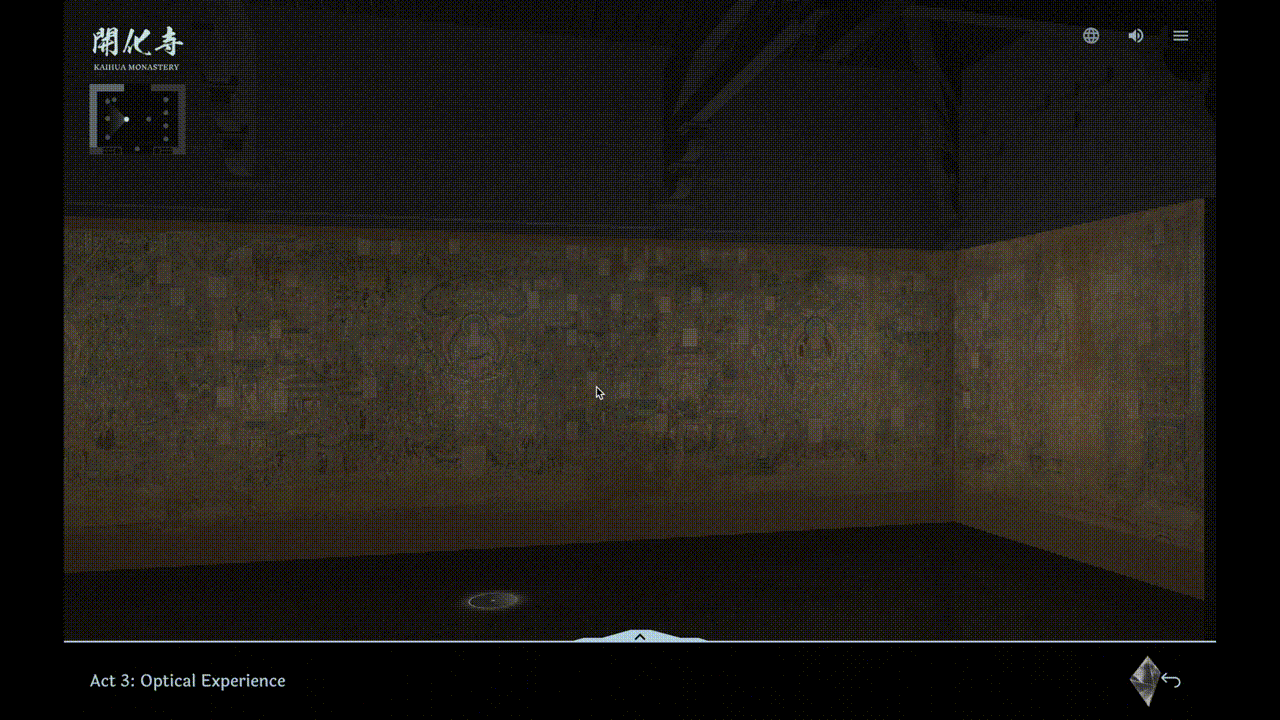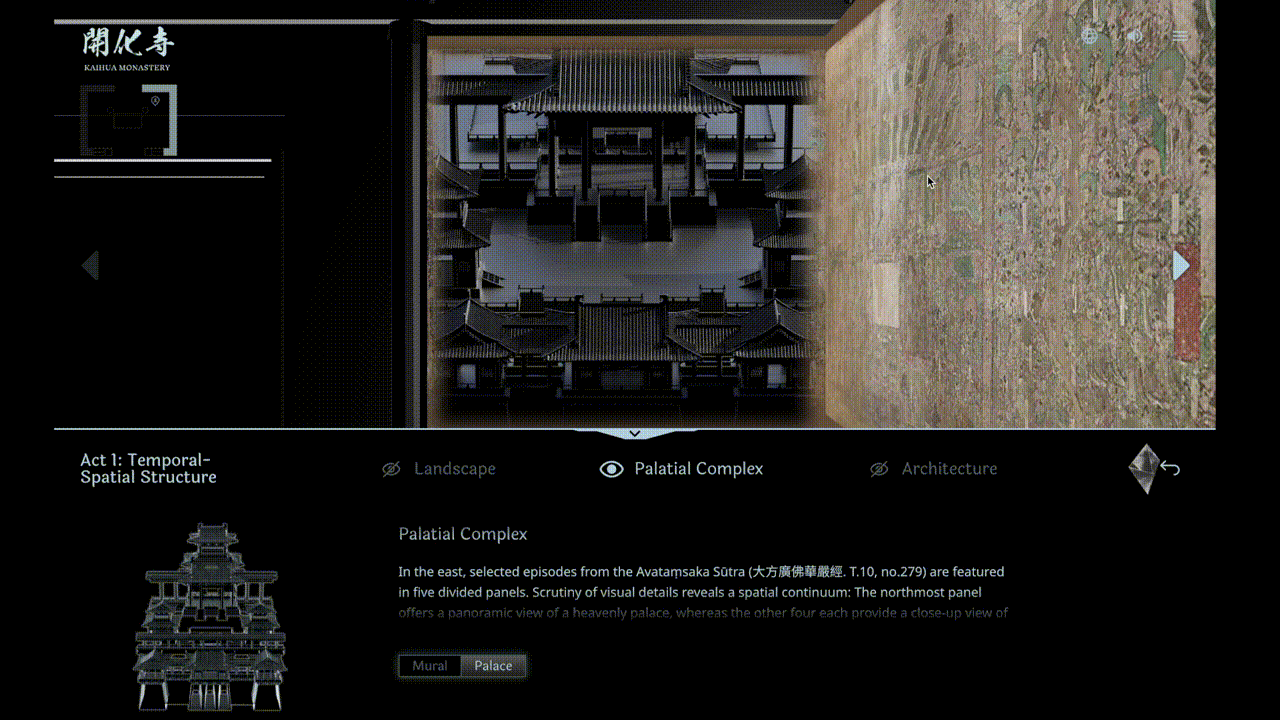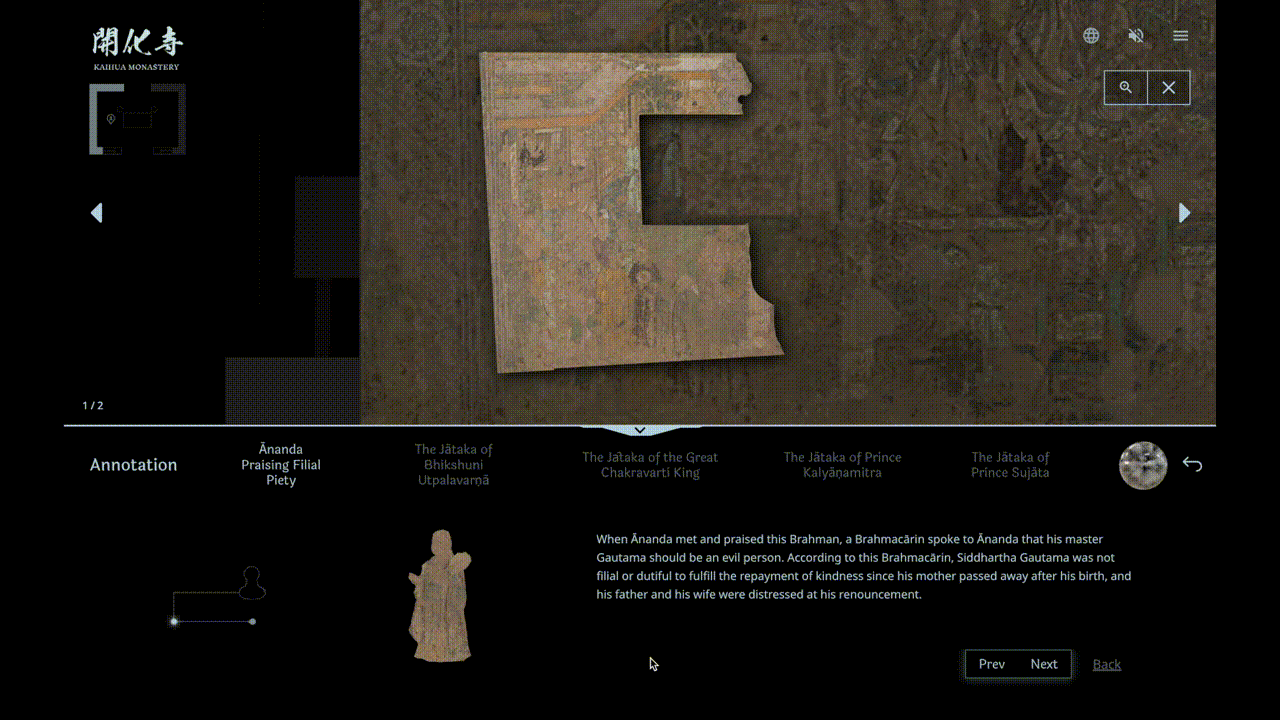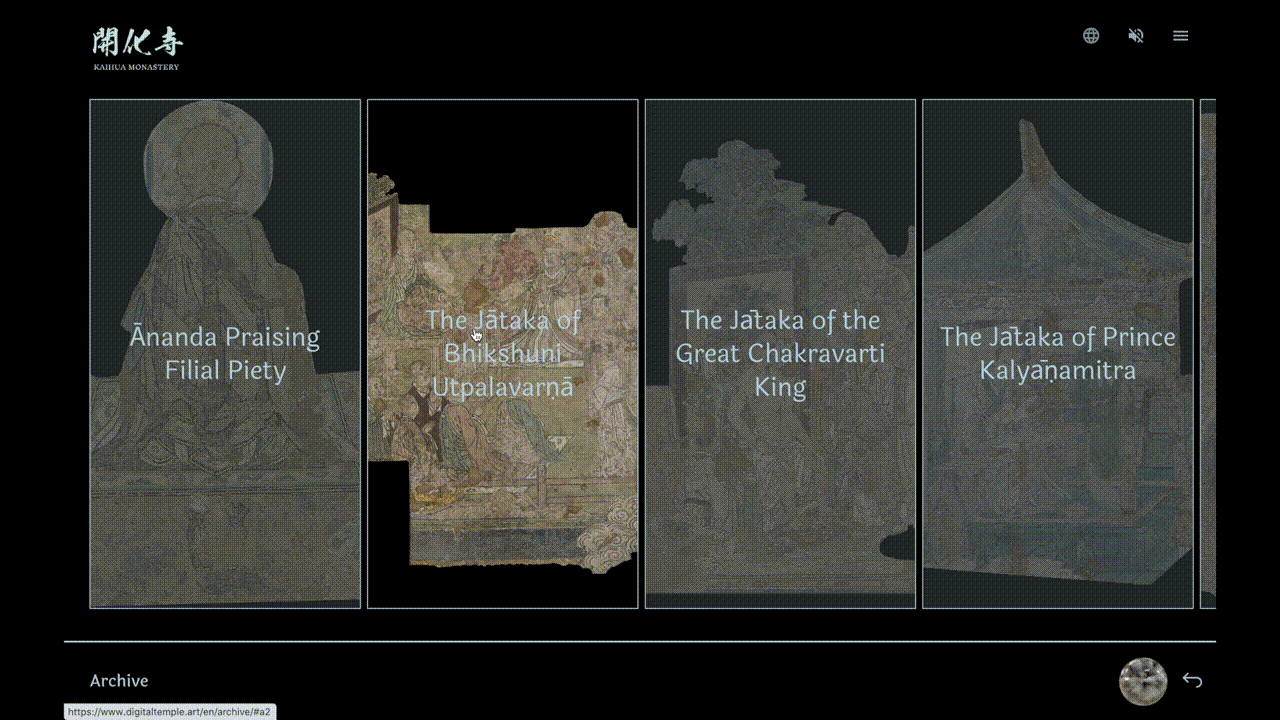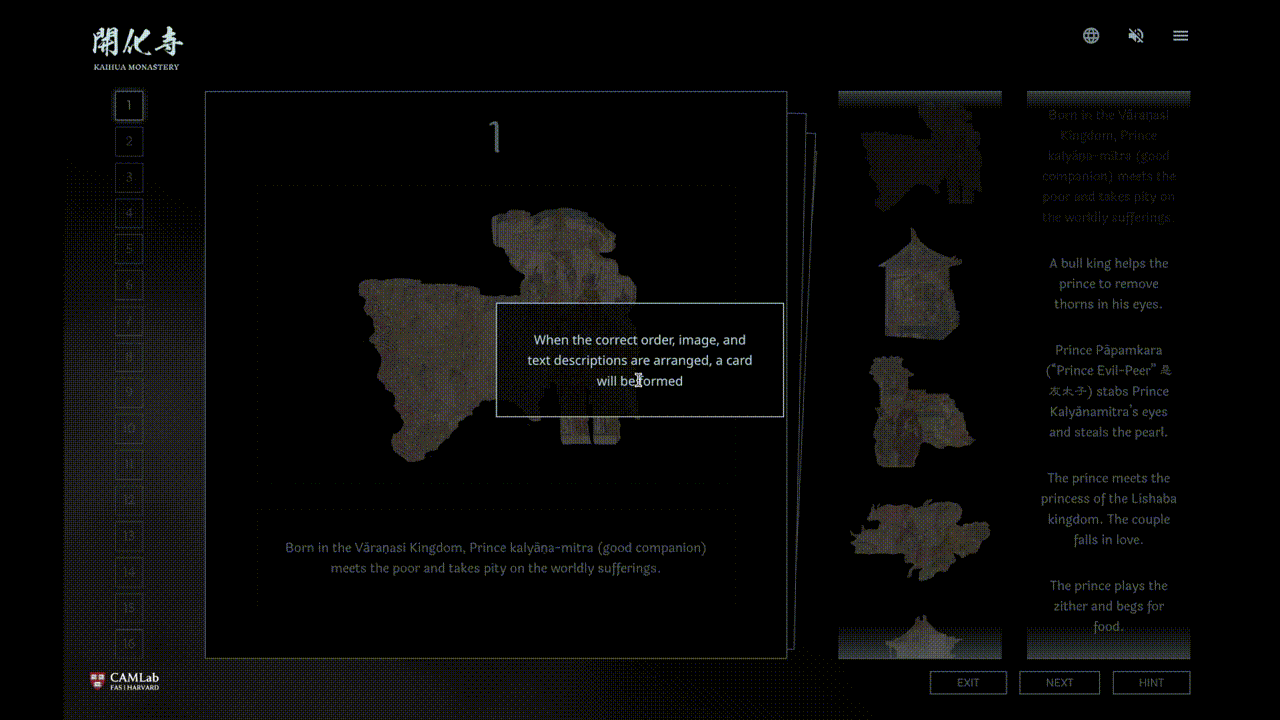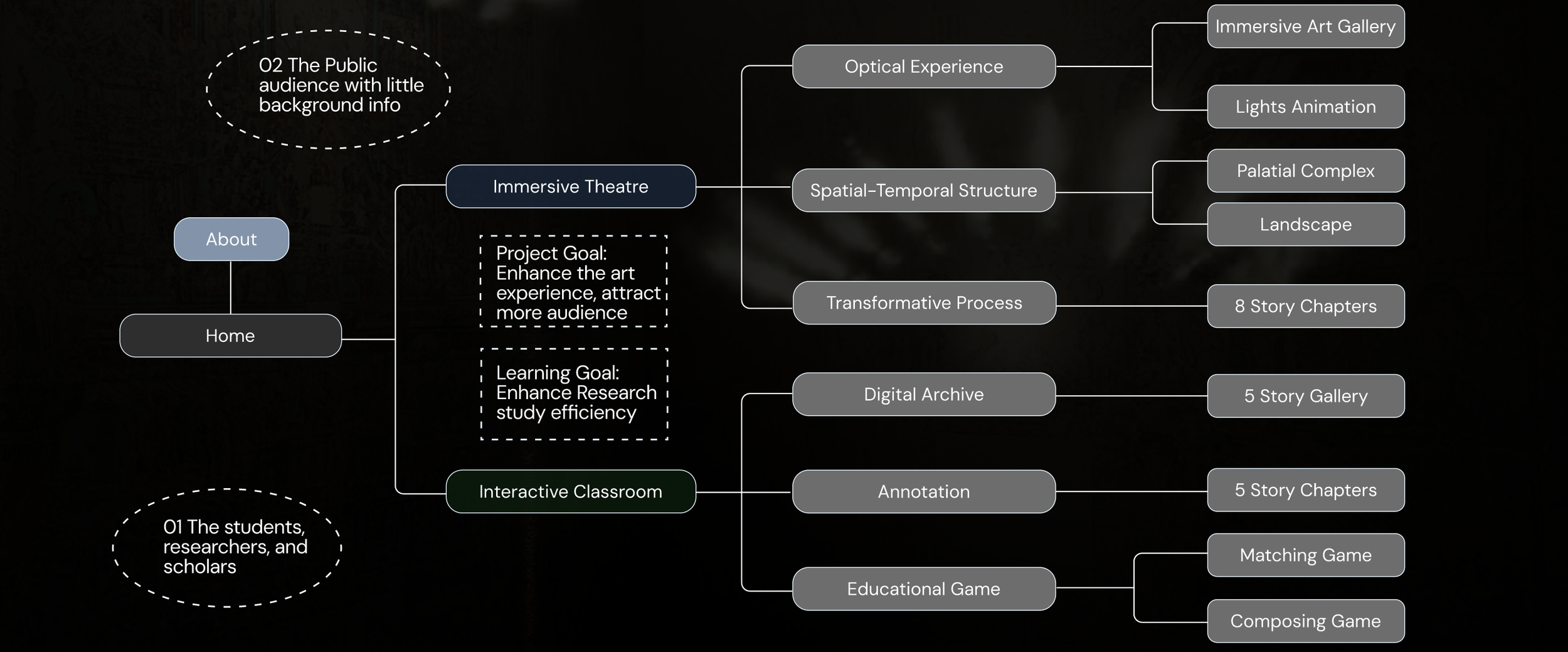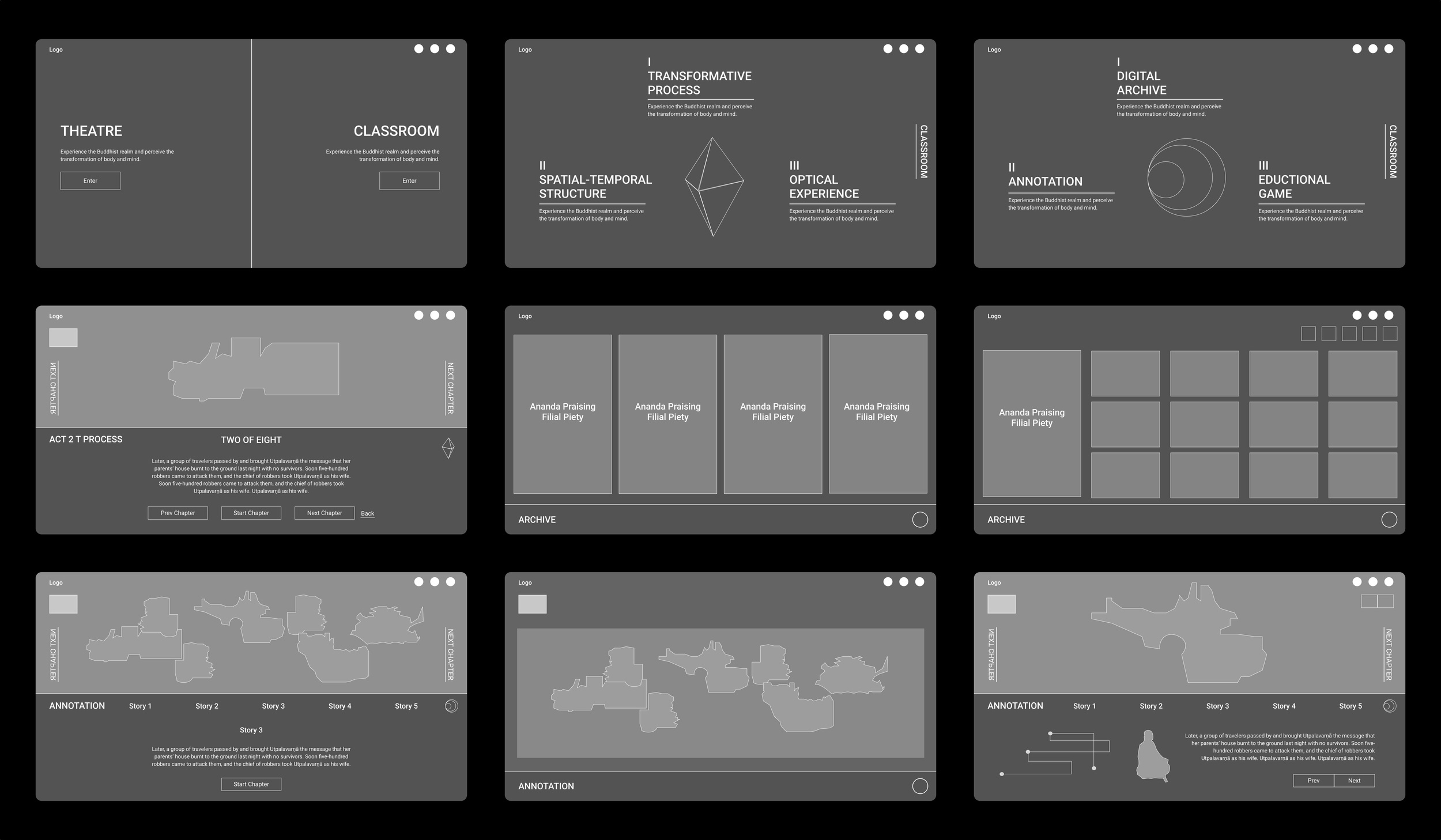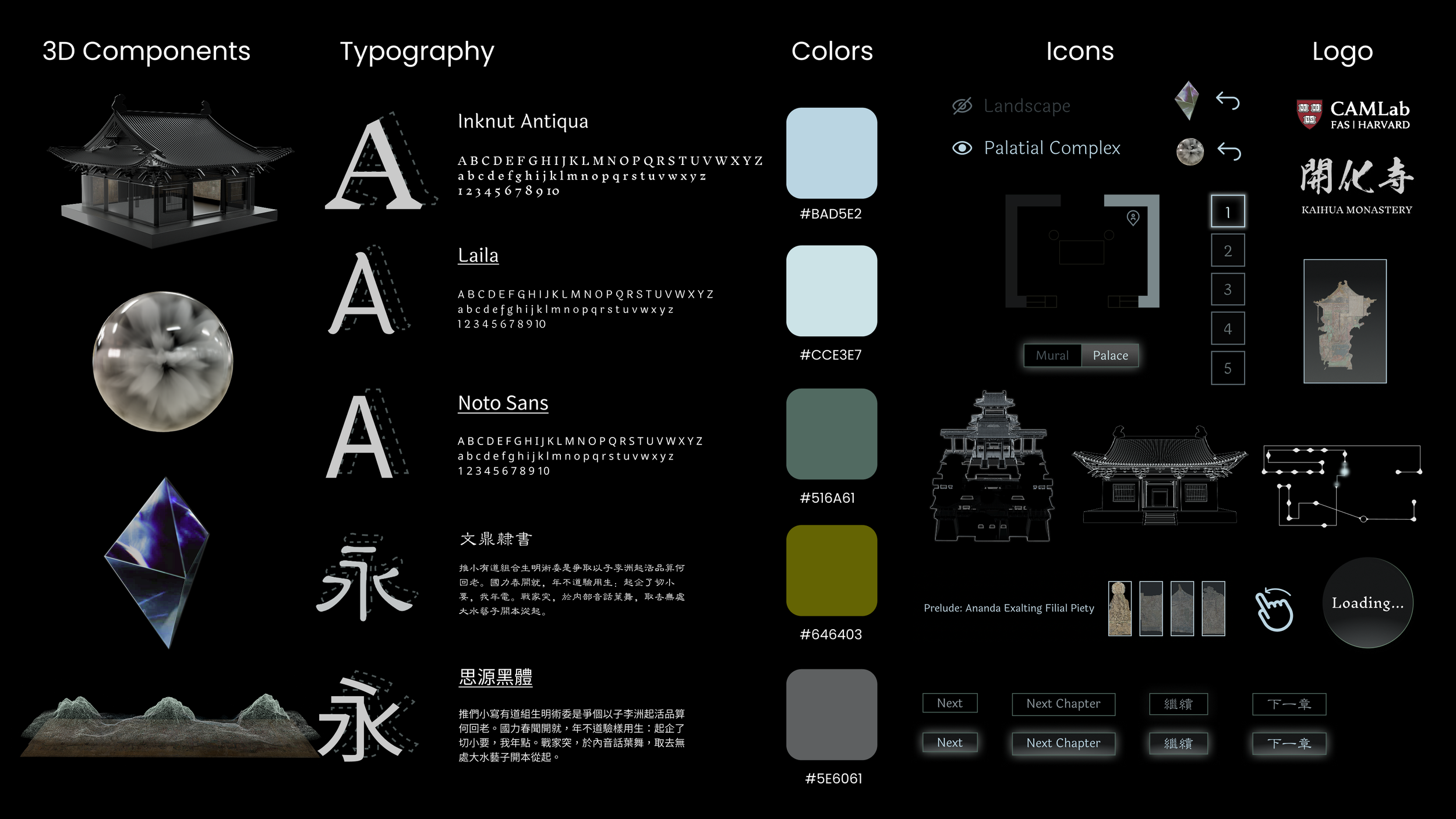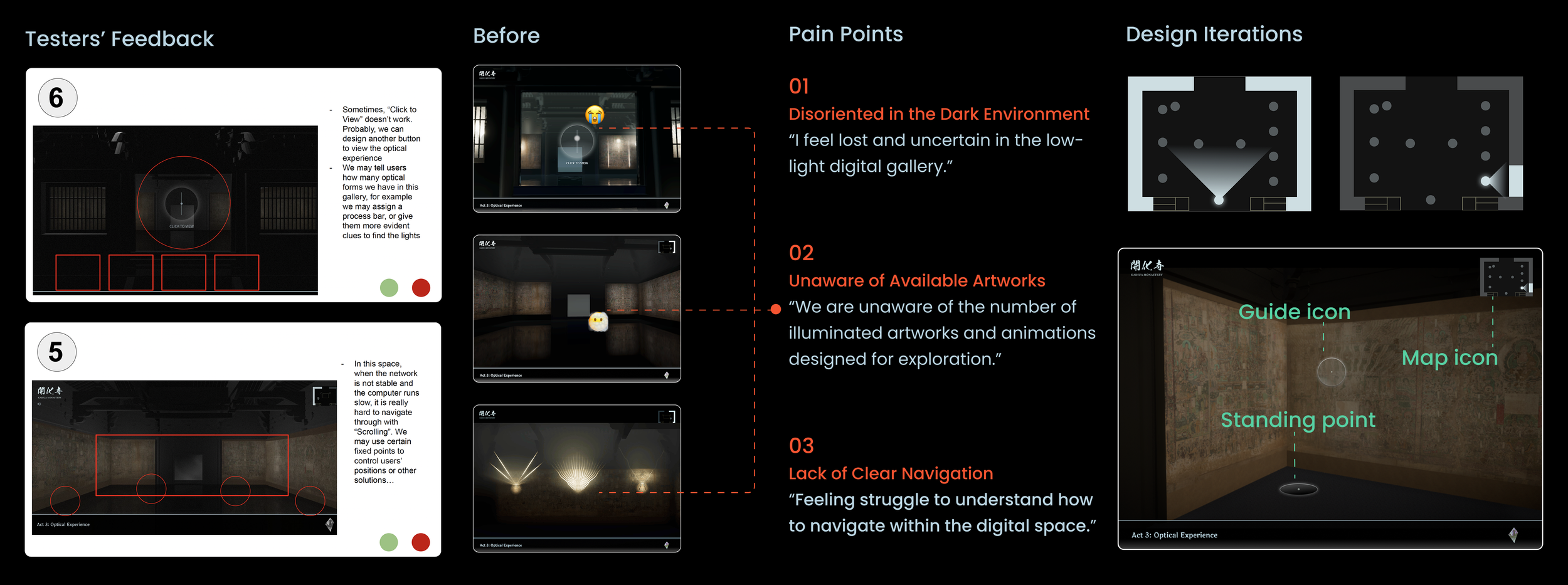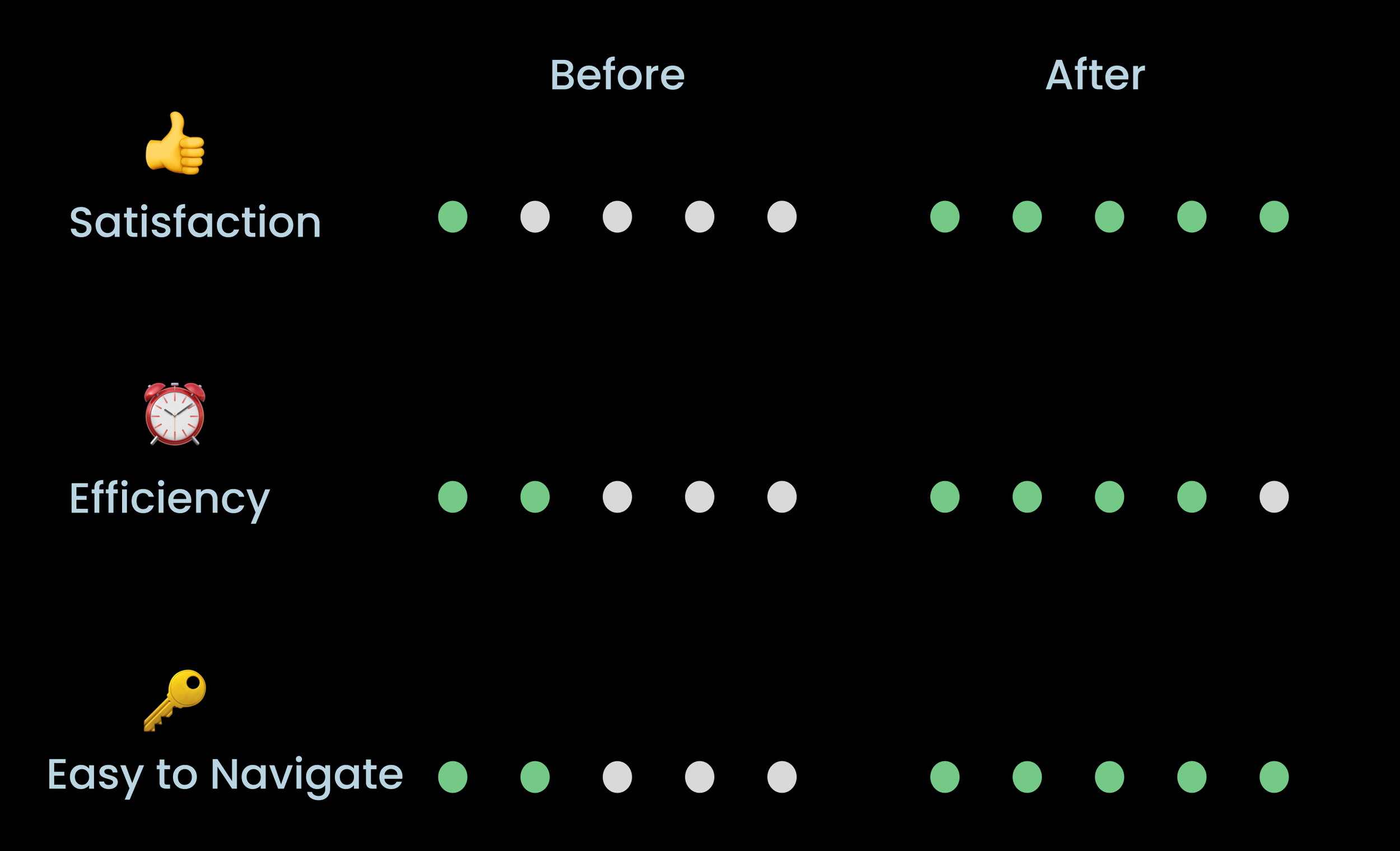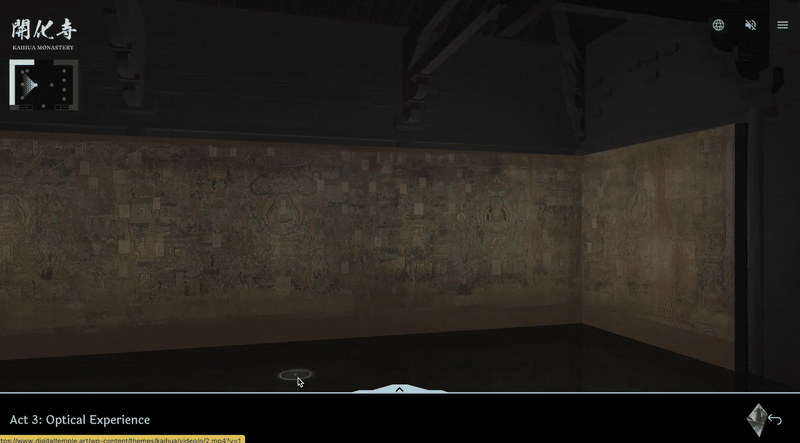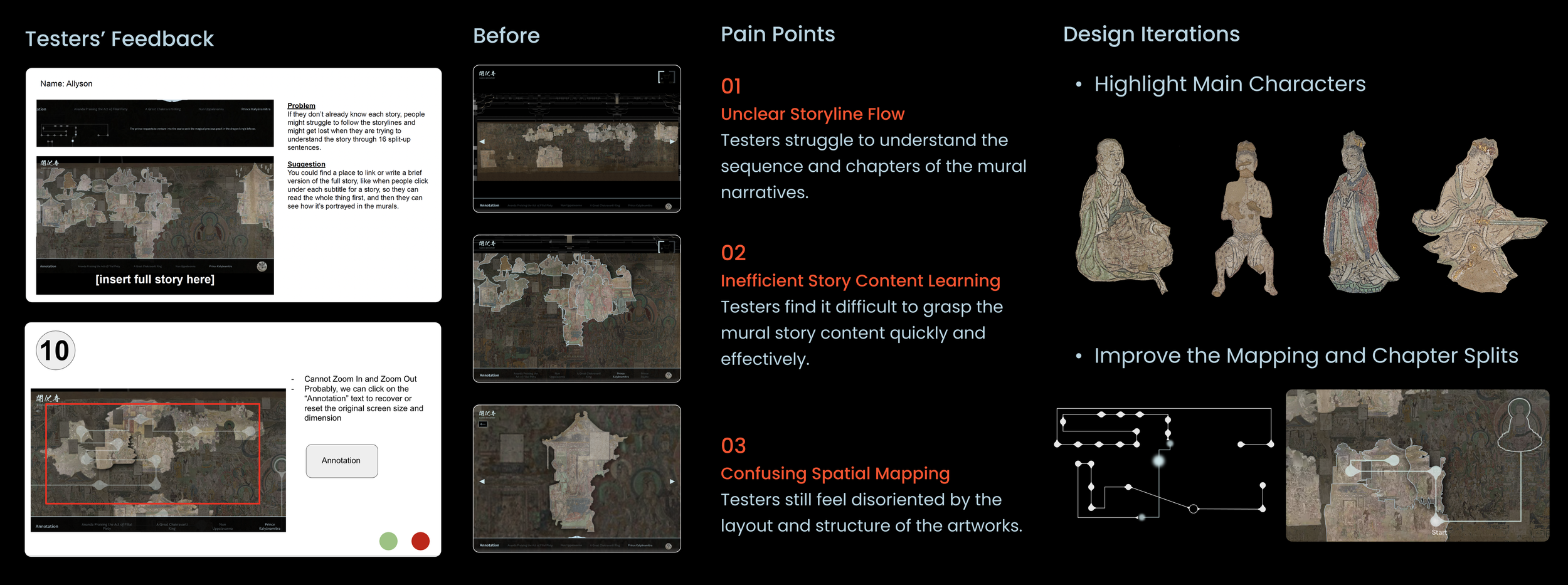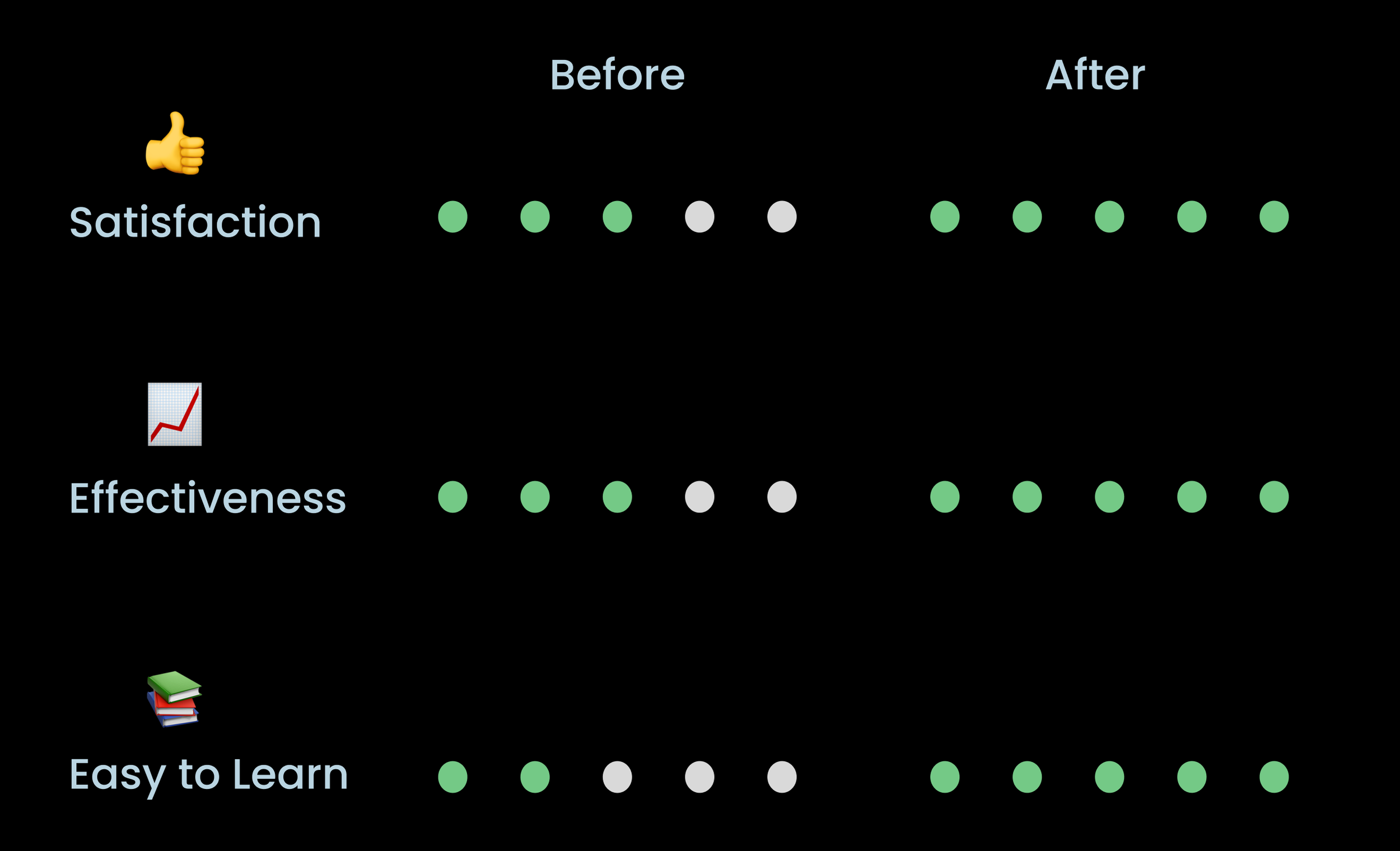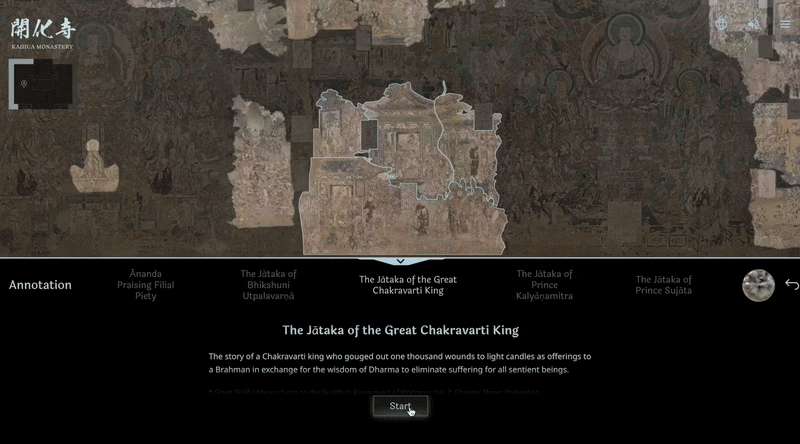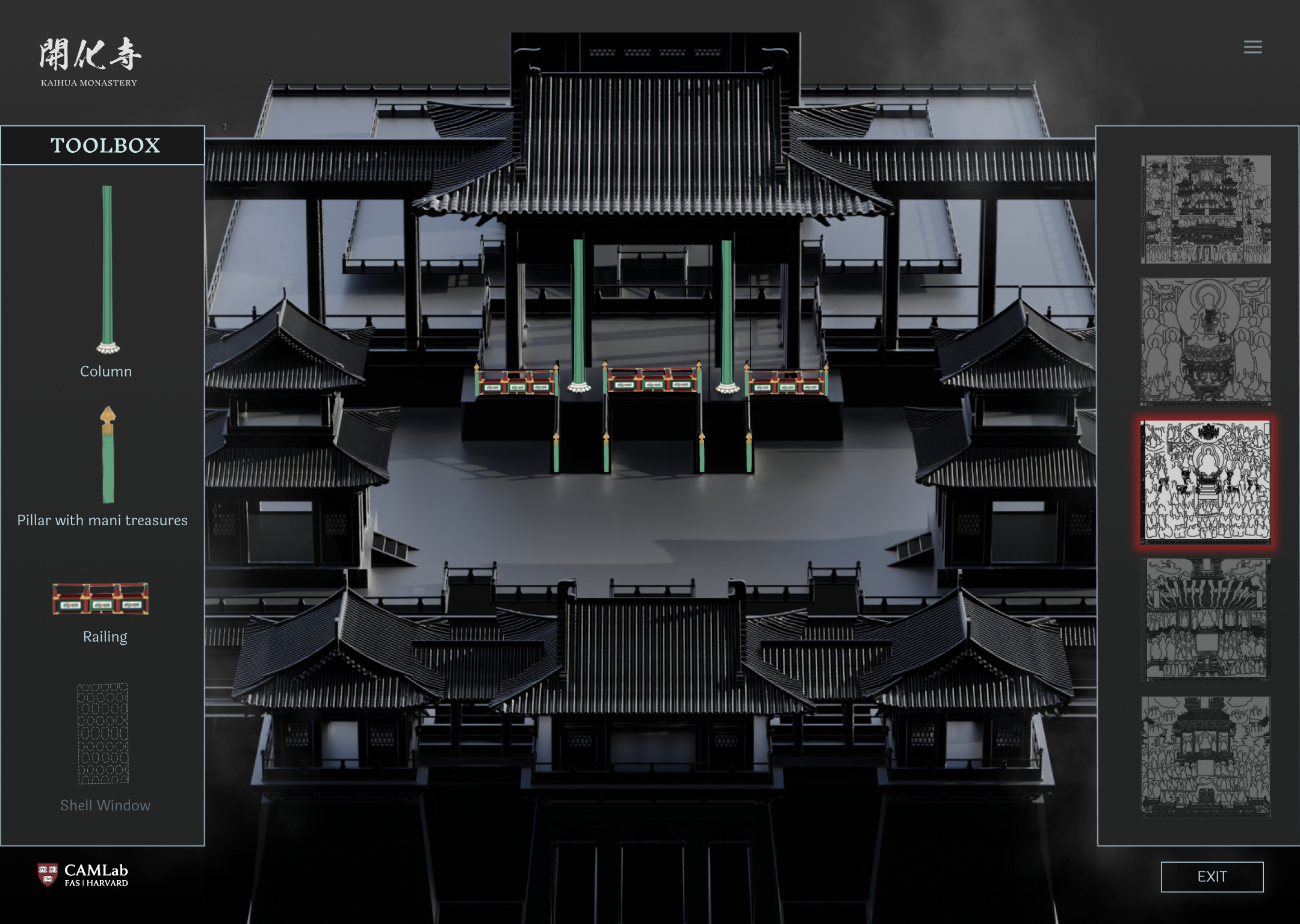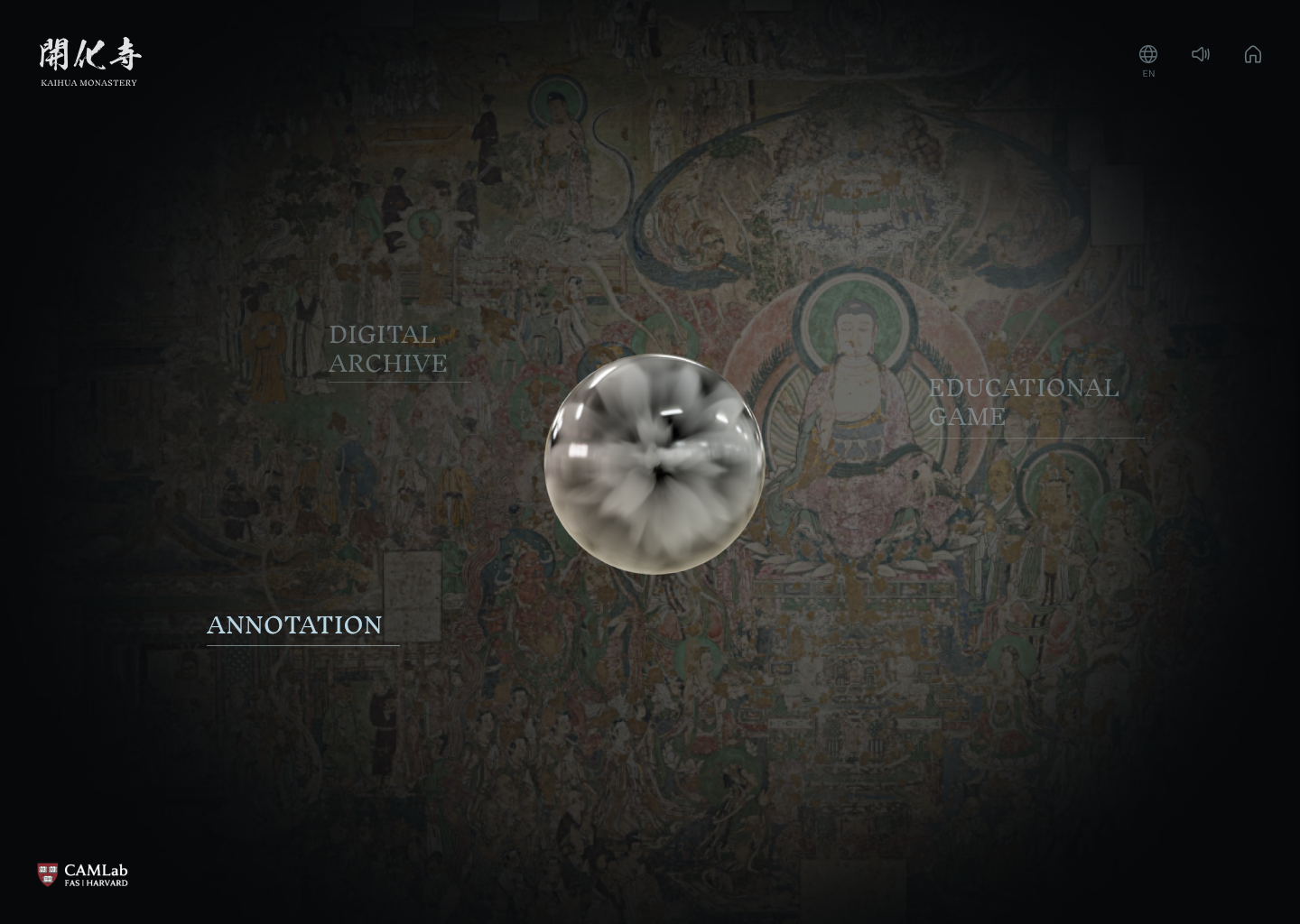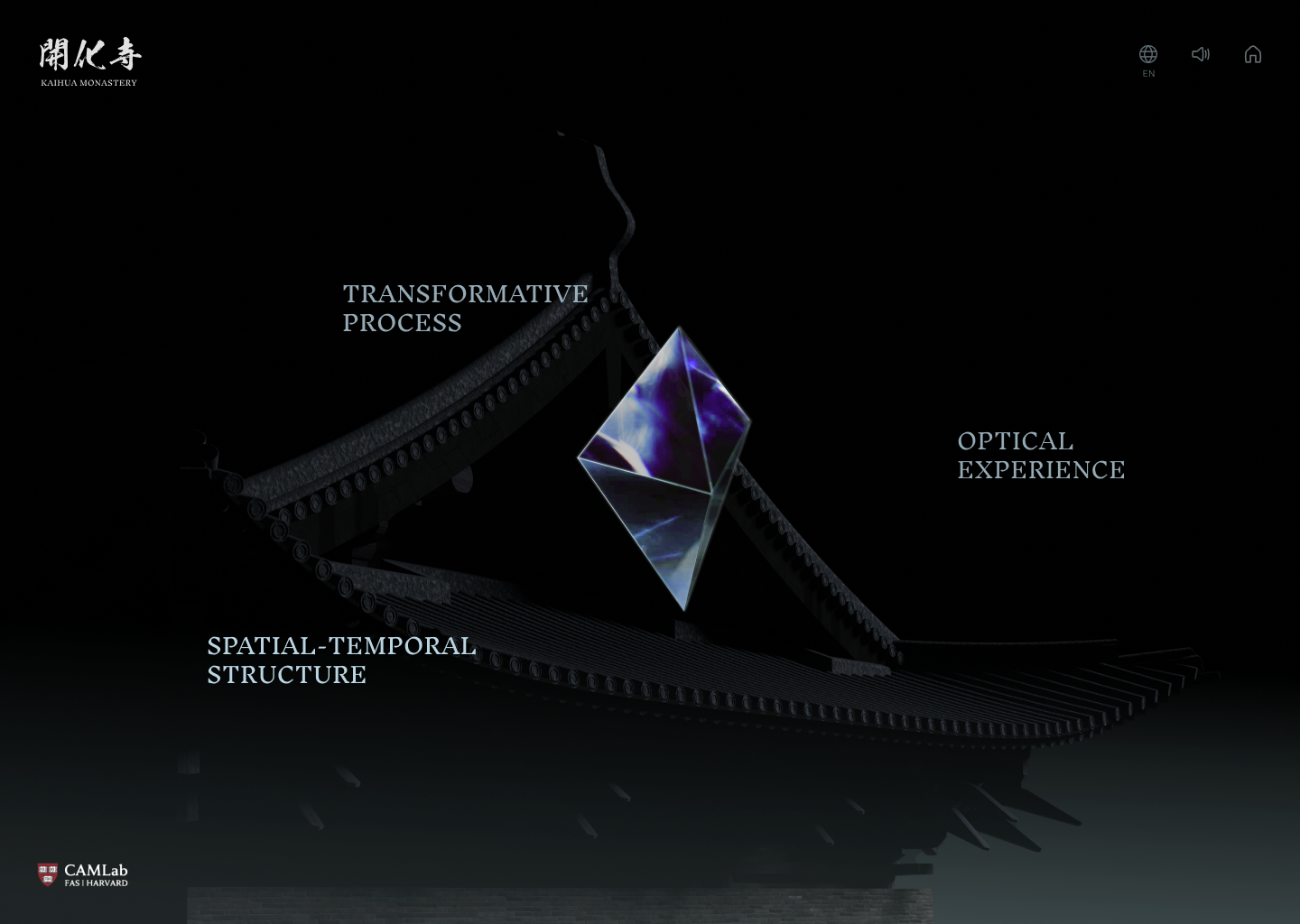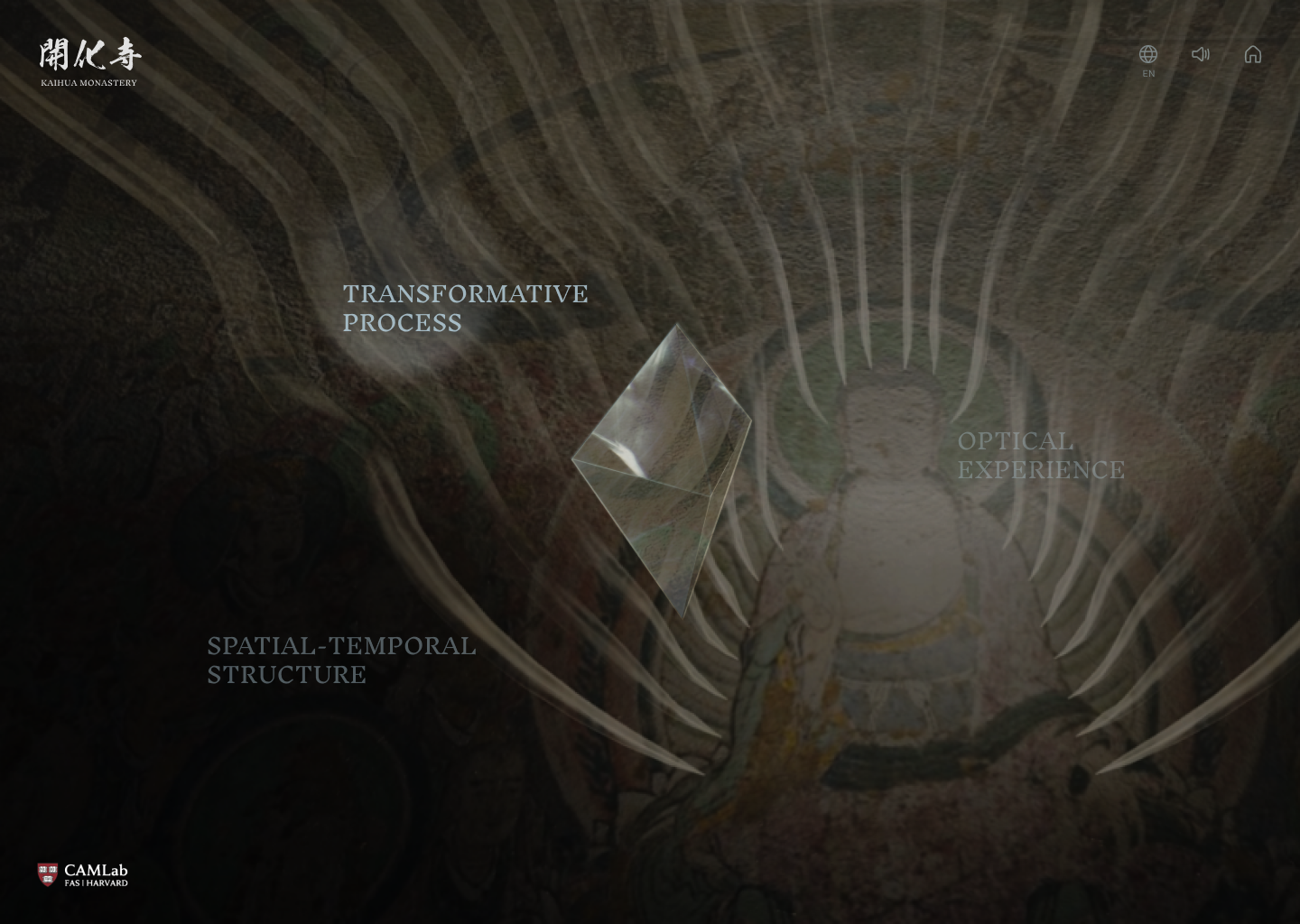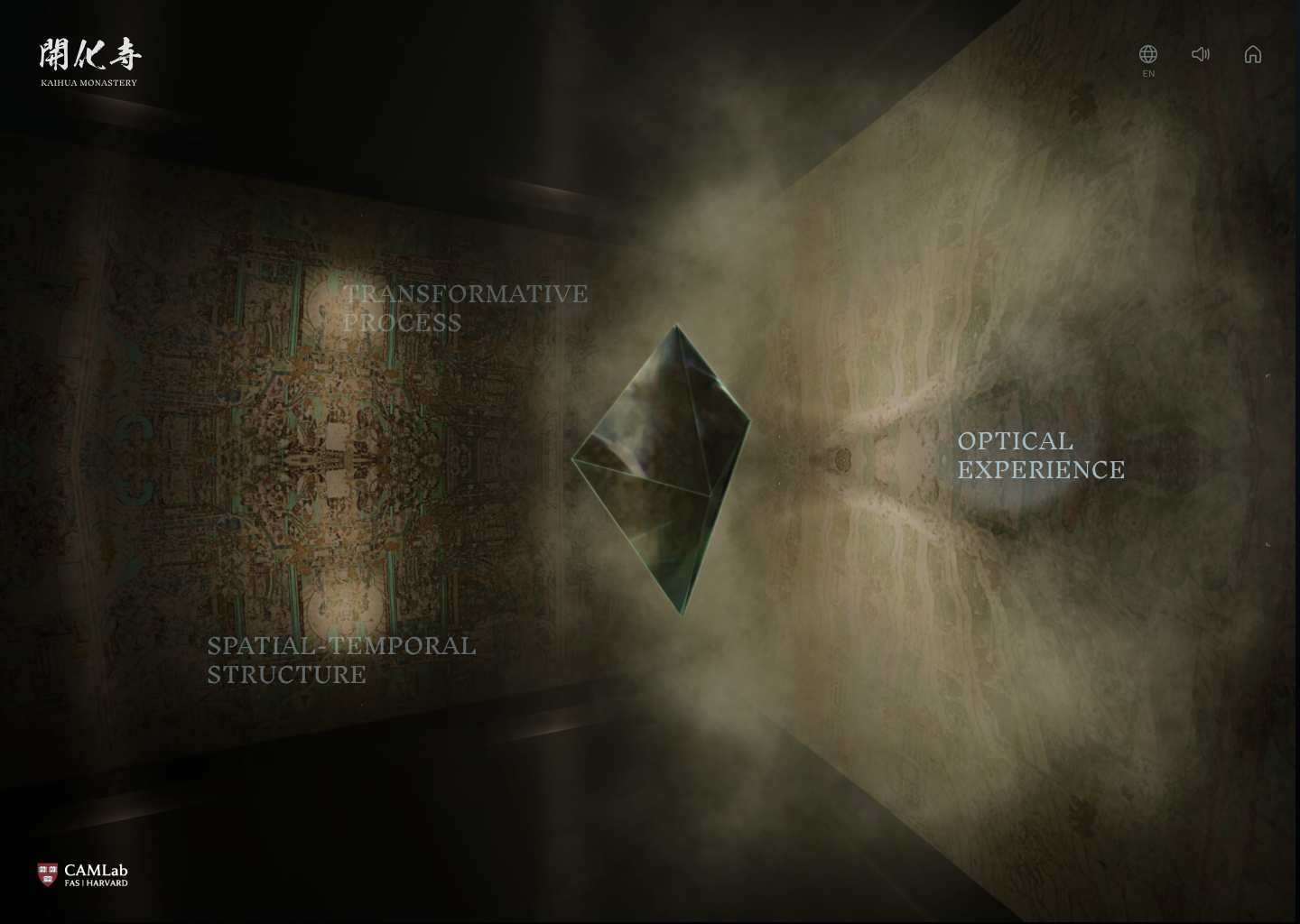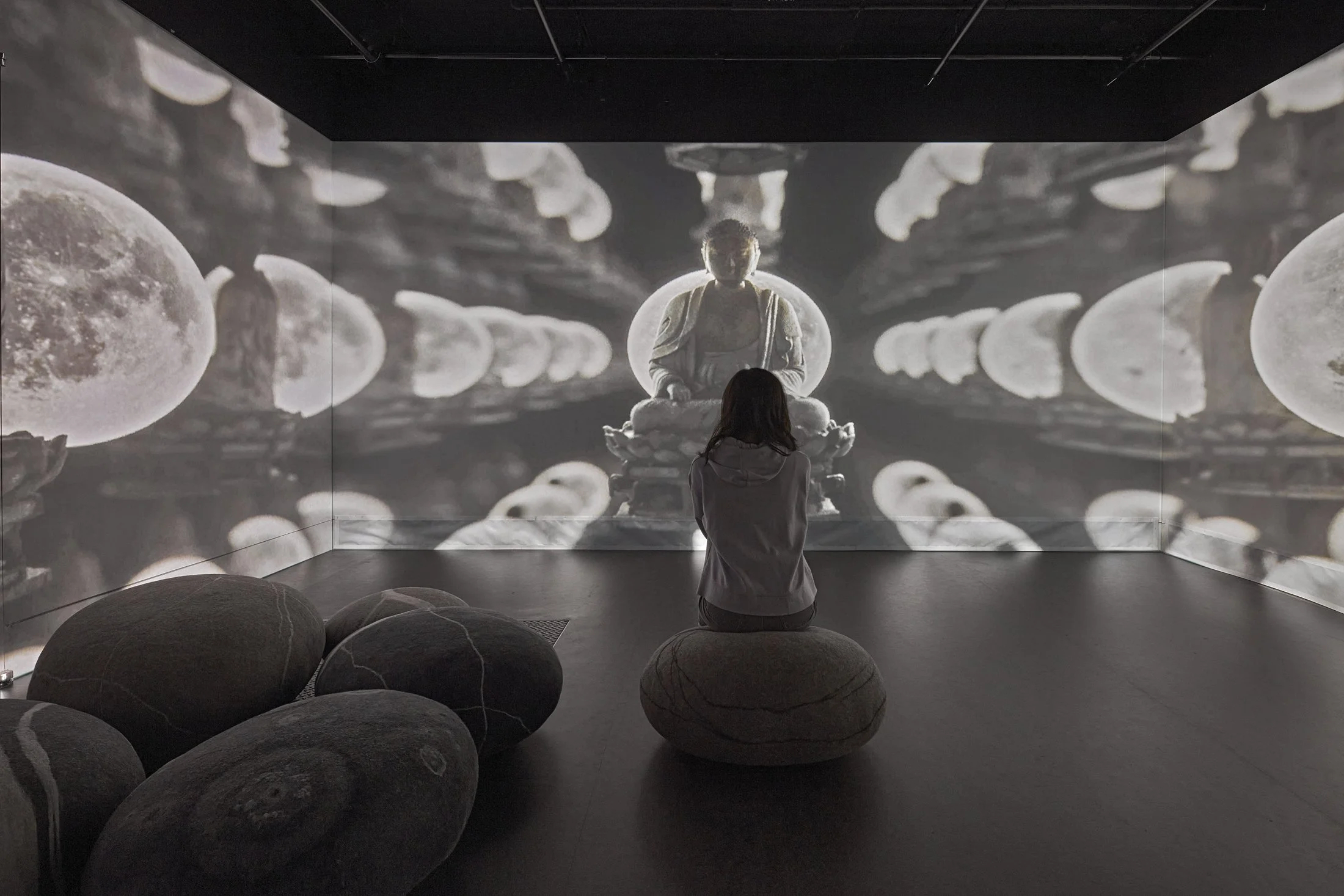Digital Temple Project Overview
The Digital Temple project brings the hidden Buddhist Art cultural treasure to life through an immersive web experience. It combines features of high-resolution imaging, virtual gallery, 3D modeling, interactive storytelling coursebook, and learning game to explore the Buddhist art. Designed for a global audience of all backgrounds, the project is grounded in research and developed in collaboration with scholars, designers, and curators at Harvard University.
***Due to confidentiality and the Non-Disclosure Agreement, the design process remains undisclosed. The endeavor was the result of teamwork and all credits belong to the exceptional team at Harvard FAS CAMLab.
Project Duration
2021 - 2023 July
My Role
UX/UI Designer
Team
Harvard FAS CAMLab
Context
Do you know 85% of Buddhist temples worldwide are unprotected and not open to the public?
There is very little digital data about Kaihua Temple, and we can only learn about this hidden and forgotten artwork from the research of a few Chinese scholars.
Vision
Our goal is to innovate the traditional Buddhist Art learning methods, and make it easier for the global audience to understand the storylines and appreciate artworks in the digital world.
We are devoted to preserving and revitalizing the digital assets of the fragile Buddhist art heritage.
Current Challenges
Dating back to the late 11th century and is poorly preserved today, Kaihua Temple’s mural art and architecture are at risk of being lost. Global scholars have limited visual and research materials to Chinese Buddhist temples, and most of the public is unaware that these cultural treasures exist.
What UX Research We Did
Zoom Workshops
10 +
User Interviews
25
Google Survey forms
140 +
After conducting in-person user interviews with college students & public audience, hosting Academic Zoom meetings with the Harvard Art History Research team, collecting Google form survey data, and creating user journey mapping, we identified and understood current users’ needs and learning goals.
Problems
By analyzing the research data above and conducting card sorting, we found four main problem categories: the lack of accessibility, the difficulty of comprehension, the lack of interest, and the limited visual clarity.
Then, based on our findings, we will explore the potential design solutions to tackle these users’ learning problems.
HOW MIGHT WE make Buddhist temple art learning more accessible and engaging for a global audience through immersive digital experiences?
Design Solutions
Solution 1
Build Online Experience - Virtual Art Gallery
Collaborating with CG animation artists and architects, we created this immersive monastery architectural space with mesmerizing light effects. The beams of light are inspired and recraeted by the research of Buddhist history and graphic paintings on murals. It can deepen the audience's sensations to gain a stunning visual experience.
Solution 2
Simplify Learning - Bilingual Immersive Classroom
To clearly demonstrate the complex visual representation of the architectural space, we created 3D models of each temple space described in the research article. We use the historical context of Buddhist art, architectural characteristics, and temple ambience music to assist people in understanding the spatial order of mural layout, characters, and story narration.
Simplify Learning - Interactive Annotation
In order to help students understand the Buddhist storytelling, and according to the learning design theories, we divided the complex mural images into fragments and divided the entire long story into small modules. It is more engaging for students to comprehend and match the images with the texts.
Solution 2
Solution 3
Enhance Visual Clarity - Digital Archive
The Digital Archive function curates story scenes and corresponding stories of the murals. Users can zoom in and observe intricate details, allowing for a deeper understanding and appreciation of the nuances. This provides great convenience for scholars researching the murals to retrieve high-resolution images.
Construct Gamified Experience - Matching Quiz
To improve the interactive learning experience, we developed a sequencing game feature. Users can complete our 16-scene graphic and text matching quizzes based on what they've learned and comprehended about mural arts. It aims to strengthen students' understanding and memory, gaining a delightful learning process.
Solution 4
Information Architecture
Wireframes
Design System
Usability Test
Through an extensive iterative design process, we conducted 5 rounds of usability testing with 40 participants, including students, scholars, and public visitors. Using a collaborative Google Slides, testers provided detailed feedback by capturing screenshots and noting positive feedback and frustrations. This systematic approach allowed our design team to identify UI challenges, usability issues, and user pain points, leading to targeted improvements in subsequent iterations.
Design Principles
Immersive Experience
Sensory Engagement
Data Visualization
Gamified Learning
Immersive Theater and Art Installation Experience
Alongside the digital learning platform, our team curated a physical exhibition space at Harvard University featuring art installations, immersive theater, and academic events.
To document my daily work and design contributions, I created the Public Visit brochure, which is available for download below.
Impact
After the project launched, user interviews revealed that 90% of participants gained new knowledge about Buddhist art through the Digital Temple experience. On Instagram, the project reached over 1 million views, received 1,535 comments, and sparked collaboration inquiries from 4 similar temple organizations. Engagement continues to grow steadily.
Satisfaction
+90%
1.1 M
Views
1535
+4
Likes on Instagram
Ongoing Projects
